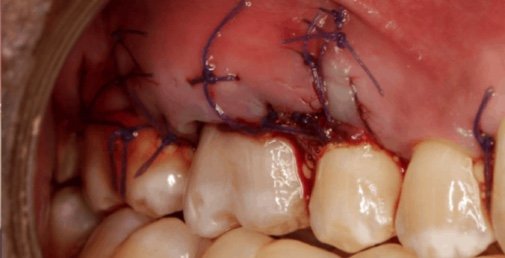Periodontal recessions
Periodontal recessions
Periodontal recession is the famous “loosening” of the teeth.
The gums tend to recede, exposing a larger part of the dental crown and sometimes even the root of the tooth.
These recessions can cause sensitivities or even pain, or can be aesthetically disturbing for the patient. In all cases, they should be treated before the chances of success are too low. Here again, there are many aetiologies (causes): anatomy, trauma, occlusion (i.e. the contact of the teeth with each other), unsuitable brushing technique, iatrogenic treatment, etc.
After a consultation with the periodontologist, a diagnosis is made and a technique is indicated, the aim of which is simple: to cover up as much (sometimes 100%) of the recession as possible, and then recover a healthy periodontal environment. Well beyond the myth of the “gum graft operation”, these techniques today are almost painless thanks to our technical platform of microsurgery, and to the per and post operative comfort that we strive to establish in each of our patients. We are the only ones to offer pre and post operative Biomodulation by ATP38, a light therapy which stimulates the cells and allows an acceleration of the healing process and a reduction of the inflammatory phenomenon.
Periodontal regeneration techniques are techniques that are implemented in the context of the destruction of the supporting tissues of the tooth. Clinically this results in gum recession, bleeding and mobility, sometimes accompanied by pain.

In some cases, the tooth can be saved. In these cases, microsurgeries are performed to remove the periodontal pocket, to get rid of the inflammatory tissue around the tooth, and to rebuild the attachment apparatus.
Biomaterials such as collagen membranes or membranes derived from your own blood (“PRF” membranes), bone of xenogenic, allogenic or autogenous origin, or proteins derived from enamel are used for this purpose.
The application of these techniques allows for the regeneration of the attachment apparatus of the tooth, and thus for the restoration of the durability of the dental organ.





